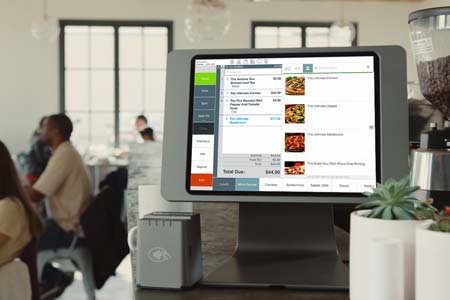A Financial Evaluation Assessment on Investing into a POS System

In today's rapidly changing commercial landscape, the significance of a reliable and effective point of sale system is paramount. As companies in different industries seek to simplify operations, improve client interactions, and control stock efficiently, putting resources into a current POS solution has become a critical decision for many business owners. Whether you're running a bustling restaurant, a store, or an e-commerce site, comprehending how a POS solution functions and the multitude of advantages it provides can significantly affect your bottom line.
The development of POS systems has transformed the way companies operate. Starting with traditional cash registers to sophisticated cloud-based systems, modern POS technologies offer a range of functionalities customized to meet the unique needs of different sectors. In Restaurant Point of Sales , we will examine the cost-benefit analysis of opting for a POS system, delving into its functionalities, safety aspects, and the comprehensive effect on productivity and customer satisfaction. In conclusion, we aim to provide a comprehensive guide that will assist businesses make informed decisions about their investment in this vital system.
Understanding Point of Sale Systems
A POS system is a combination of hardware and software that companies use to handle sales transactions. Typically, it features a terminal with a touchscreen interface, a scanner for barcodes, a receipt printer, and sometimes a cash drawer. The software component handles sales, stock monitoring, customer management, and reporting, making it an vital tool for modern companies. It simplifies the entire payment process, allowing for faster and more effective transactions while capturing valuable data that can enhance decision-making.
The development of Point of Sale systems has transformed how companies function. At first, classic cash registers served as the main transaction tool, mainly recording sales and calculating totals. As tech advanced, Point of Sale solutions morphed into sophisticated solutions, boasting cloud computing capabilities that allow businesses to reach their systems remotely. This shift provides real-time information analysis, making easier inventory management and giving businesses better perspectives into their sales trends and customer preferences.
Modern POS solutions can greatly improve the experience of customers across various fields. For retail environments, ease of payments leads to reduced wait times, while restaurants can use features like table handling and mobile ordering. The integration of payment processing options, such as contactless payments and wallets on mobile devices, caters to consumer preferences and improves payment security. As companies embrace these systems, they not only streamline operations but also nurture a more satisfying shopping experience for their customers. ### Selecting the Ideal POS System
Choosing the best POS solution requires grasping the specific needs of your business and the customer experience you desire to create. Commence by assessing the scale of your operation and the industry you are in, as diverse sectors such as retail, service, and digital commerce have unique requirements. Consider functionalities that match your business model, such as inventory management for stores or table management for eateries. Identifying what core features resonate most with your operational workflow is essential.
Next, evaluate the budget and total cost of ownership associated with the alternatives. POS systems can vary from fundamental setups to comprehensive solutions that offer sophisticated options like client management and analytics. It's essential to factor in not only the initial investment but also ongoing costs such as ongoing payments, maintenance, and potential upgrades. Look for systems that offer adaptability and expansibility so that your POS can adjust as your business grows, ensuring you cannot outgrow your system too quickly.
In conclusion, take into consideration the implementation process and the support provided by the vendor. A dependable POS system should come with robust customer support to assist with installation, training, and troubleshooting. Explore options that feature extensive training resources for your staff, as effective use of the POS can significantly enhance productivity and customer satisfaction. Conducting tests or requesting demos can also be extremely advantageous in making an informed decision that matches your goals and operational needs.
Securing The POS Solution
To guarantee the safety of the POS system, it is vital to implement effective protections against likely digital threats. Commence by adopting robust security measures such as network barriers, malware protection software, and intrusion detection systems. Continuously monitor the network for suspicious activity and execute frequent safety audits to identify vulnerabilities. Furthermore, maintaining compliance with the Payment Card Industry Data Security Standard (PCI DSS) is necessary for securing customer transaction data and protecting your business from lawsuits.

Another important aspect of secure POS operations is employee training. Make sure that all staff members are well-informed about best practices for using the POS system safely. This entails creating unique access credentials, avoiding shared passwords, and being vigilant about phishing attempts. Regularly updating training materials can aid reinforce the significance of security and educate the team on the latest threats and preventative measures.
Finally, keeping the POS system updated is essential for maintaining security. Software updates often include patches for recognized vulnerabilities, making it essential to stay current. Schedule regular system updates and effectively communicate the importance of these updates to your team. Additionally, employ secure configurations and access controls to limit data exposure, reducing the risk of breaches. By combining these strategies, you can significantly enhance the security and resilience of the POS system.
